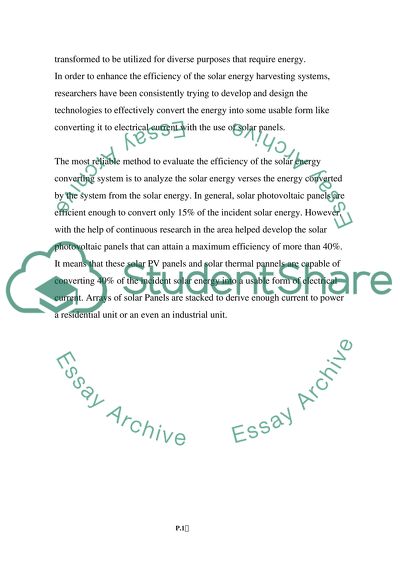Cite this document
(“Solar energy Essay Example | Topics and Well Written Essays - 2500 words - 1”, n.d.)
Solar energy Essay Example | Topics and Well Written Essays - 2500 words - 1. Retrieved from https://studentshare.org/engineering-and-construction/1686679-solar-energy
Solar energy Essay Example | Topics and Well Written Essays - 2500 words - 1. Retrieved from https://studentshare.org/engineering-and-construction/1686679-solar-energy
(Solar Energy Essay Example | Topics and Well Written Essays - 2500 Words - 1)
Solar Energy Essay Example | Topics and Well Written Essays - 2500 Words - 1. https://studentshare.org/engineering-and-construction/1686679-solar-energy.
Solar Energy Essay Example | Topics and Well Written Essays - 2500 Words - 1. https://studentshare.org/engineering-and-construction/1686679-solar-energy.
“Solar Energy Essay Example | Topics and Well Written Essays - 2500 Words - 1”, n.d. https://studentshare.org/engineering-and-construction/1686679-solar-energy.


